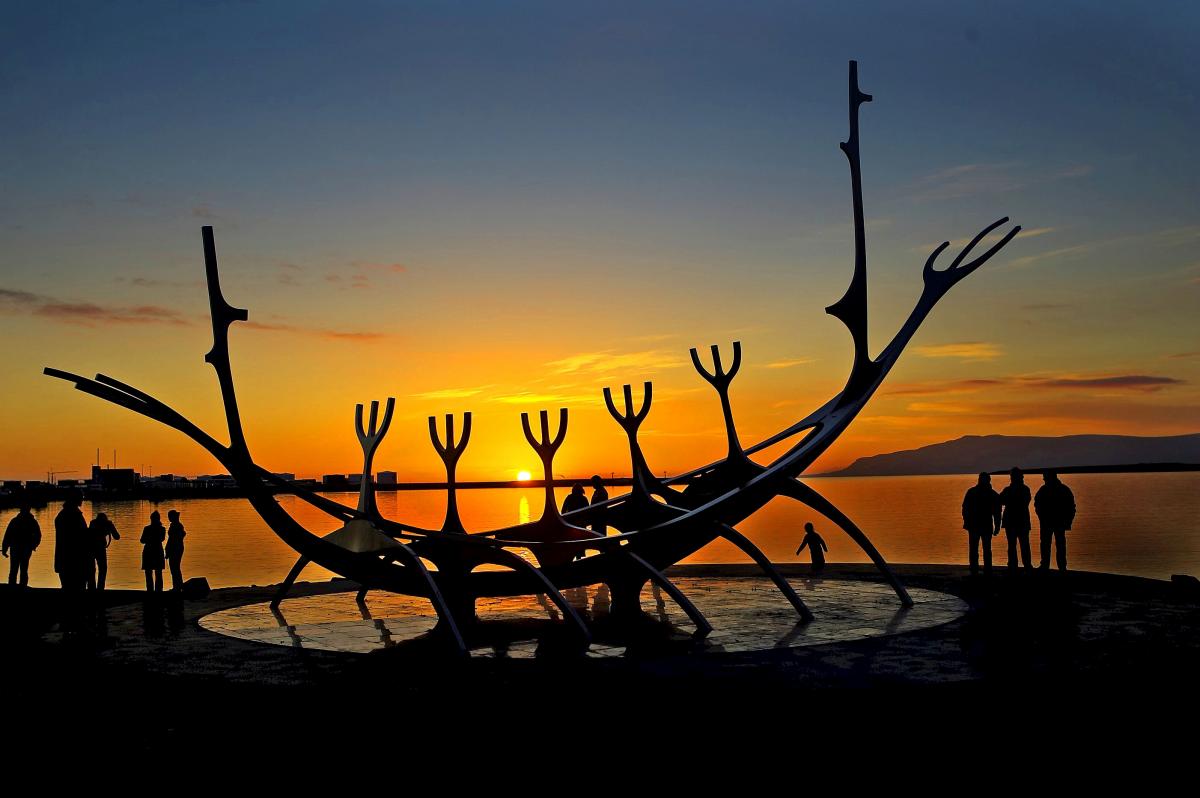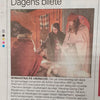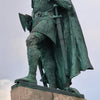Solfarid (the Sun Voyager) in Reykjavik, Iceland. – Thinking critically


Solfarid (the Sun Voyager) is a modern sculpture in Reykjavik Iceland. Although a modern addition to the art pieces in the city, it has engraved itself as one of the cities greatest monuments as visitors, tourists as well as locals flocking to sit by it, climb onto it or get selfies taken with it.
It was made by an Icelandic artist, Jon Gunnar Arnason who in 1986, won a completion funded by the City in order to celebrate Reykjavik's 200 year anniversary.
Many assume that the Sun Voyager is a modern representation of a Viking ship but according to the sculptor, that was not the intention or thought behind it. The idea was that it was to represent a dream boat, an ode to the sun and symbolise hope and freedom. Although not intended, it is hard not to see a Viking ship when looking at the sculpture and this is not only because it is clearly a ship which strongly resembles the silhouette of a Viking ship but it is also hard to ignore the history, mythology and culture of the Icelandic people. The power and depth of symbolism has always been extremely present in the Icelandic people, making the multiple symbolism in the sculpture hard to ignore and it becomes almost impossible to simply take the word of its creator and believe that none of it was included in its creation.
When the form of the vessel is studied, it is hard not to see a striking resemblance to the rune Algiz which is believed to be a protective rune as well as the mark of the Valkyries and furthermore, Ægishjálmur (Helm of awe) which is an Icelandic magic rune that can be found in different sagas and Old Norse manuscripts. The oldest source which mentions the Ægishjálm is to be found in Fáfnismál, one of the poems in the Poetic Edda which was compiled by the Icelandic scholar Snorri Sturluson who died in 1241 AD but who is believed to have used older sources in his work. Ægishjálmur is a symbol of gigantic magnitude and is one of the most mysterious and powerful symbols in Norse mythology. Believed to intend to inspire awe and fear in the enemy, the eight wands of Algiz also form a protective fort around the centre enabling the centre free movement in all directions. Much like a shield wall would have been used in battle, the magic rune appears to be designed with ancient architecture and engineering in mind- much like a castle is protected by layers of water, mud pits and towers.
When looking into who Jon Gunnar was, it immediately becomes apparent that he wasn´t only a great artist but a very spiritual one and a deep thinker. With a degree in engineering, he was especially talented with the use of metal and by looking at his other works, had a very strong affinity with the sun.
Jón Gunnar gave an interview where he explained his thinking behind the ship (published in the newspaper Þjóðviljinn on 11 June 1987).
“In May 1985, a group of artists, members of the Scandinavian art project, Experimental Environment, gathered to take part in the Saari-Vala Environmental Art Action in Bockholm, Finland. There I experienced a sense of the history of the origins of Icelanders, something which is also related in the present exhibition at the Nordic House in Reykjavík.
I had an uncanny feeling that I had been on this island before, when travelling on my way from Mongolia to Iceland, hundreds of years ago.
As you know, there have been speculations that the Icelanders as a race originated in Mongolia. I have discovered the history of their migration to Iceland, which runs as follows: Many centuries ago, a mighty warlord, let’s say it was Alexander the Great, was living in the centre of the known world. He dispatched his bravest and most experienced warriors, along with some women, scribes and other followers, on an exploratory expedition to the cardinal directions, the north, west, south, and east, in order to discover and conquer new, unknown territories. Those who headed east followed the rising sun until they reached the steppes of Mongolia. There they settled down and lived in comfort. Those scribes who accompanied the warriors were expected to document the expedition for the king. Several centuries later, when the documents written by the scribes eventually came to be examined, the people discovered that they had another fatherland in the west. They therefore decided to gather together their belongings and head back west towards the setting sun. We followed the sun for days and years, walking, riding and sailing. We enriched our experience and our determination grew in strength as our journey progressed, and we recorded everything that we saw and experienced. I remember endless pine forests, mountains and waterfalls, lakes, islands, rivers and seas before we eventually reached the ocean. We then constructed huge ships and sailed on westwards towards the setting sun.
As a result of this vivid experience of my participation in this expedition while on the island of Bockholm in the Finnish archipelago, I carved a picture of a sun ship into a granite rock by the sea. The sun ship symbolizes the promise of new, undiscovered territory. It is also being exhibited here at the Nordic House, made of aluminium.”
When it eventually came to place the Sun Voyager, it didn´t prove as simple and straight forward as initially thought it would be. Criticism has been loud over the fact that the ship doesn´t face west, towards the setting Sun as it was originally intended but due to various reasons (including changes in the town planning), the artist and the city settled on its current location which is on a small headland off Sæbraut (Seaway). The Sun Voyager now faces the same direction as the people of Iceland see themselves as people of - the North.
Sadly but to add some speculation to the debate, during the creation of the Sun Voyager, the sculptor was severely ill with leukaemia and died in April 1989, one year before the Sun Voyager was placed in its current location. Suggestions and speculations have been voiced that as he faced a certain death, he subconsciously - or possibly consciously, applied the old Norse belief and ancient burial rite of a ship transporting the dead to the afterlife. These are merely speculations which were never supported by the artist but all these connections are hard to ignore and it is likely that the sculpture will continue to raise speculation and debate with generations to come.
Note that these speculations are all a part of a course about tangible things that I am taking and that required implementing critical thinking about objects.
Sources:
Wikipedia - Sólfarið
HULD Manuscript - Ægishjálmr
Poetic Edda - Snorri Sturluson
Iceland Travel – the Sun Voyager
Jón Gunnar Árnason - Hin kosmíska listsyn by Snorri Freyr Snorrason 2011
-
Posted in
critical thinking, Solfarid, sun voyager, viking ship





